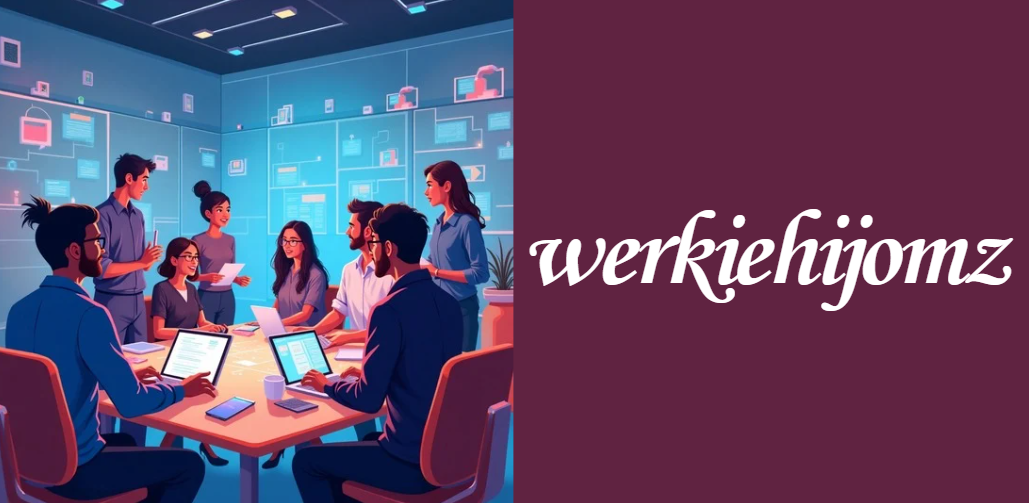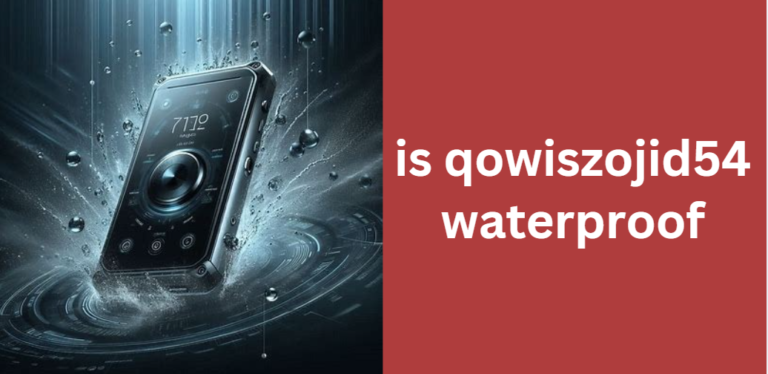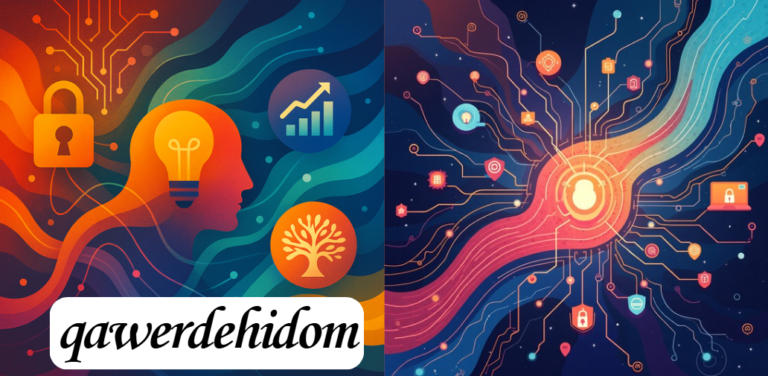Innovating Through Werkiehijomz: A Modern Approach to Learning and Creativity
The concept of werkiehijomz can be seen as a fusion of age‑old learning practices and modern, technology‑driven methods. Instead of relying solely on traditional theories and rote memorization, the werkiehijomz approach emphasizes active engagement and practical applications.
Imagine learning as if riding a bicycle—one must experience the process rather than merely study a manual to master it. This philosophy not only enhances comprehension but also inspires creative solutions to everyday challenges.
Unlike conventional methods, werkiehijomz offers an integrated system that encourages a blend of various disciplines, making it adaptable to educational institutions, businesses, and creative industries alike.
This article delves into the origins, principles, applications, benefits, and future possibilities of werkiehijomz, offering an insightful and easy‑to‑understand overview of a cutting‑edge concept.
The Origins and Evolution of werkiehijomz
The roots of werkiehijomz lie in the fundamental human desire to improve and innovate. Historically, people learned through direct experience—observing, practicing, and adapting lessons passed down through generations. Modern education and technological advancements have revitalized this approach, giving birth to werkiehijomz as a formal method that balances traditional learning with digital innovation.
The evolution of werkiehijomz was catalyzed by the need to bridge gaps between isolated fields and disciplines. It emerged at a time when rapid technological changes demanded new strategies for problem‑solving.
Early adopters combined elements of experiential learning, interactive techniques, and interdisciplinary collaboration to form a methodology that empowers individuals to harness creativity and improve efficiency. Over time, this method has expanded from educational practices to include business strategies and artistic expressions, making it a versatile tool in contemporary culture.
Defining werkiehijomz
At its core, werkiehijomz is a conceptual framework that redefines the learning and innovation process. It can be broken down into several key components:
- Experiential Learning: Emphasizes the importance of active participation and learning by doing.
- Interdisciplinary Collaboration: Encourages the merging of different fields to create a synergy that produces innovative solutions.
- Continuous Improvement: Stresses the need for ongoing refinement and adaptation, ensuring that ideas evolve with changing circumstances.
- Resource Optimization: Focuses on using available resources more efficiently to maximize productivity and innovation.
Below is a table that summarizes the core attributes of werkiehijomz:
| Attribute | Description |
|---|---|
| Experiential Learning | Involves learning through action and real‑world application rather than passive absorption. |
| Interdisciplinary Collaboration | Merges diverse skill sets and perspectives to solve complex problems creatively. |
| Continuous Improvement | Commits to regular feedback and iterative progress to refine ideas and processes. |
| Resource Optimization | Aims at leveraging existing resources for maximum efficiency and sustained growth. |
This blend of characteristics makes werkiehijomz not just a learning method, but a holistic mindset that can be adopted by anyone striving for personal growth or organizational excellence.
werkiehijomz in Practice
Putting werkiehijomz into practice involves a structured yet flexible approach. The methodology is simple: start by understanding the basics, then progress to practical application, and finally, utilize feedback to continually improve.
This method can be observed in classrooms that utilize project‑based learning, startups that employ cross‑functional teams, and even within digital art projects that invite collaborative creation.
Consider a typical implementation scenario in a business environment:
- Understanding the Fundamentals: Employees begin by mastering the core principles of werkiehijomz through workshops and interactive training sessions.
- Practical Application: Teams then work on real‑world projects where they must apply these principles to solve problems creatively.
- Feedback and Iteration: The process is refined based on continuous feedback, leading to iterative improvements and innovative breakthroughs.
For example, a tech startup may use werkiehijomz to streamline product development by integrating diverse perspectives from marketing, design, and engineering. This practice not only speeds up the innovation process but also results in more robust and creative solutions.
The Benefits of Embracing werkiehijomz
Organizations and individuals who adopt werkiehijomz enjoy several notable benefits. Not only does it spark creativity and drive innovation, but it also promotes a more holistic and inclusive method of working. The advantages include:
- Enhanced Creativity: Active engagement and collaborative problem‑solving lead to breakthrough ideas and novel solutions.
- Improved Efficiency: By focusing on resource optimization and continuous improvement, processes become leaner and more productive.
- Greater Adaptability: The flexible nature of werkiehijomz allows individuals and organizations to easily adjust to evolving challenges.
- Interdisciplinary Growth: Merging various perspectives fosters a richer understanding and opens new avenues for learning and business development.
Below is a simple list showing key benefits in a straightforward format:
- Increases creative output through hands‑on practice.
- Enhances the ability to solve complex problems collaboratively.
- Optimizes resources to achieve sustainable growth.
- Builds confidence and promotes continuous learning.
Applications Across Industries
The versatility of werkiehijomz makes it applicable in numerous fields. In education, this method transforms classrooms into interactive environments where students learn through real‑world projects. In the business realm, companies implement werkiehijomz to break down departmental silos and drive innovative strategies that adapt to market changes.
The creative arts also benefit, as artists experiment by combining traditional techniques with digital innovation.
For instance, a university might integrate werkiehijomz into its curriculum by launching interdisciplinary programs that combine science, art, and technology. Similarly, a creative agency could use the principles of werkiehijomz to develop multimedia campaigns that capture the dynamic nature of modern communication.
The following table illustrates how werkiehijomz is applied across different sectors:
| Sector | Application |
|---|---|
| Education | Interactive, project‑based learning environments that foster hands‑on engagement. |
| Business | Cross‑departmental teams that collaboratively innovate to solve complex challenges. |
| Technology | Agile methodologies and rapid prototyping driven by continuous feedback loops. |
| Creative Arts | Hybrid artistic projects merging digital innovation with traditional artistic practices. |
Challenges and Considerations
Despite its many advantages, adopting werkiehijomz does present certain challenges. Critics often point to its initial ambiguity, which can make it difficult to standardize across diverse contexts.
Additionally, a balance must be struck between flexibility and structure; too much fluidity might lead to inconsistencies, while too rigid an approach could stifle creativity.
Organizations aiming to implement werkiehijomz should consider the following measures to overcome challenges:
- Develop clear guidelines and benchmarks to measure progress.
- Encourage open communication and continuous feedback to fine‑tune processes.
- Invest in training sessions to ensure everyone understands the methodology.
These steps help maintain the adaptability of werkiehijomz while ensuring that its benefits are consistently realized.
The Future of werkiehijomz
Looking ahead, the potential of werkiehijomz is immense. As the world becomes more interconnected and technology continues to evolve, this framework is expected to integrate emerging trends such as artificial intelligence, virtual reality, and machine learning. Experts predict that werkiehijomz will play a pivotal role in shaping global collaboration and fostering sustainable innovation.
Organizations that embrace werkiehijomz can expect not only to remain competitive but also to lead transformative change in their respective industries. The continuous improvement inherent in the method ensures that users are always ready to adapt to new challenges, making werkiehijomz an essential part of the future landscape.
FAQs
Q1: How can remote teams tailor the principles of werkiehijomz to work effectively?
Remote teams can adapt the werkiehijomz approach by using virtual collaboration tools, establishing clear remote communication protocols, and scheduling regular interactive sessions. This adjustment helps maintain engagement and enables distributed members to contribute creatively, ensuring that distance does not hinder interdisciplinary synergy.
Q2: What role does cultural diversity play in maximizing the benefits of werkiehijomz?
Cultural diversity fuels varied perspectives, which is essential for the creative problem‑solving that werkiehijomz champions. By integrating individuals from different cultural backgrounds, teams can tap into a wealth of unique ideas, approaches, and insights that enrich the collaborative process and promote innovative outcomes.
Q3: Can traditional industries benefit from adopting werkiehijomz methodologies?
Yes, traditional industries can incorporate werkiehijomz by gradually introducing cross‑departmental initiatives, rethinking established processes, and fostering an environment where experimentation is welcomed. Transitioning traditional workflows to include elements like prototype testing and iterative feedback helps bridge conventional practices with modern innovative techniques.
Q4: What metrics can organizations use to measure the success of werkiehijomz initiatives?
Organizations can track performance through qualitative and quantitative metrics such as project turnaround times, the rate of creative output, employee satisfaction scores, and feedback on interdisciplinary collaboration sessions. Additionally, monitoring the successful implementation of iterative improvements and the long‑term sustainability of innovations provides valuable insights into overall progress.
Q5: How does the werkiehijomz framework integrate emerging digital trends like AI and VR?
The werkiehijomz approach is flexible enough to integrate emerging technologies by leveraging digital tools for brainstorming, prototyping, and collaborative learning. These technologies enhance experiential learning and provide new platforms for creative expression, further enriching the framework’s capacity to drive innovation in rapidly evolving digital environments.
Conclusion
In summary, werkiehijomz is a transformative framework that redefines the way we learn, collaborate, and innovate. By combining hands‑on experience with interdisciplinary collaboration and continuous improvement, this approach offers a fresh perspective on tackling complex challenges in education, business, technology, and art.
Its benefits, including enhanced creativity, improved efficiency, and greater adaptability, make it a powerful tool for personal and professional growth. Embracing werkiehijomz not only leads to innovative solutions but also paves the way for sustained progress in an ever‑evolving world.
Read more
Ultimate Guide: What CILFQTACMITD Help With – Transforming Efficiency & Productivity
The Ultimate Guide to Kansas City Chiefs vs. 49ers match player stats
Deforest Kelley on QVC 1986: A Comprehensive Guide
The Ultimate Guide to exposmallcom: In-depth Review, Features, and Strategies for Digital Dominance





